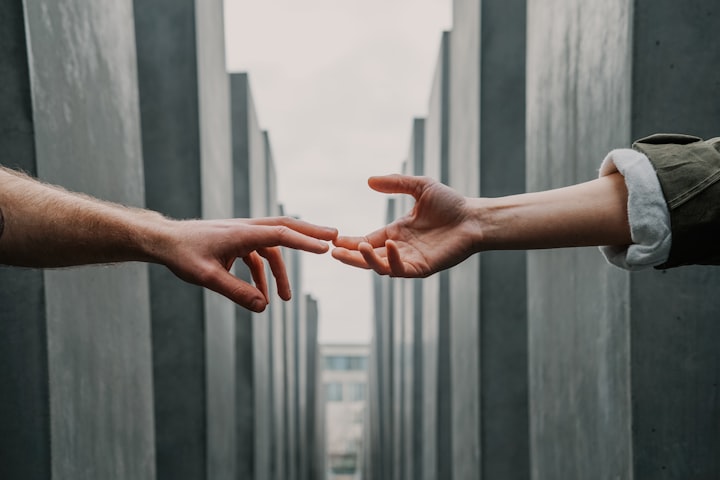Dying to Know
When my 3-year-old asked about death, I blabbed

Call me morbid. When my oldest daughter was little, we used to go for walks through a cemetery in our neighborhood. But I wasn't some ghoulish creature of the night with a fetish for death. We live in a city and the cemetery was one of the largest green spaces within walking distance. The big shade trees and cool stone markers offered respite on hot days. I'd often see people sitting under the branches of the elms, or leaning against the cool of a crypt contemplating life and the end of it.
The cemetery was so popular people were dying to get in, ha. I'm a Dad jokester in a Mom's body.
My preschooler loved strolling through what she referred to as the Stone Park. This cemetery happens to be a final resting place of several Romani or Roma families. The idea that centuries earlier a group of itinerant people from India would wander around the globe and, somehow, a small group would settle here -- permanently -- struck me as poetic. Most of their headstones were embedded with small porcelain portraits of the deceased using some kind of photo transfer technique that created surreal pops of color. My young daughters admired the scarlet red scarves tied around the dark hair of the women and the glinting gold hoop earrings piercing the lobes of the men.
Once, from a distance I saw what I thought was trash littering a majestic headstone. It made me sad and I thought I'd clean it up. As we got nearer, I recognized that the half-eaten bag of Oreos and two school lunch-sized cartons of milk were not carelessly tossed but meticulously arranged on the slab of granite at the base of the headstone with his-and-hers porcelain portraits of an older couple. I imagine that Grandpa and Grandma had served plenty of snacks in their lifetimes and the grandkids wanted to make sure the elders had supplies in the afterlife.
The very idea made my life sweeter.
It was the rare sighting of milk and cookies that piqued my young daughter's curiosity. Once before, she'd asked why the stones had names carved on them. I told her it was to remember people who had died. Now she wanted to know if those dead people lived in the graveyard and if they came out at night to eat milk and cookies. I assured her that they were, like Scrooge's friend Marley, dead as doornails.
Okay, so I didn't quote Dickens because the kid was more of a Dr. Seuss fan at that point, but I definitely said something about death.
Granted, that probably wasn’t my best mothering moment considering the child was still a few months short of her fourth birthday. Had I been quicker-witted, I could have said the milk and cookies were there to commemorate those who’ve gone before us to Walla Walla, Washington, because that is certainly a lot more fun to say.
Instead, I blurted out the unspoken reality: People die. They cease to exist. They go kaput.
She asked if all people die and I said yes, but usually not until they are old.
She asked if her grandparents would die one day. I said, yes. She asked if her Papa would die. I said, yes. Will you die? Same answer. And then came the big, existential question from a kid barely out of diapers, “Am I going to die?”
The time was right to reveal to her that, though she was born to mere mortals, she was, in fact, an eternal fairy who would reside forever-and-ever-after in a glittering palace of sunshine, lollipops, and rainbows.
Or at the very least, in Walla Walla, Washington.
But I just couldn’t bring myself to lie to her. By the time she hit her teens, I was excellent at concocting what I justified as protective fibbing. In her early years though, I simply blurted out brutal truths willy-nilly.
“Yes,” I said. “Everyone dies.”
She wanted to know what it was like to be dead.
“I don’t know,” I said. “No one knows for sure. But people like to think about what it might be like.”
Then I gave her a preschool-level Theology 101 crash course, touching on everything from reincarnation and returning to the cosmos, to spending a blissful eternity in heaven with all things good.
This did not go over well.
When you are a kid, and sometimes well into adulthood, everything unknown is scary. As far as she was concerned, any variation of the afterlife or lack thereof sounded like a perpetually strange daycare.
I suggested the afterlife could be a bit like the before life. Did she remember what it was like before she was born? She did not. Was she scared back then? She was not. This notion seemed to soothe her anxieties, and we headed home content to consider the meaning of puppy tail wags and the smell of roses. The next morning, my daughter informed me that she didn’t care for any of the life-after-death options. She decided instead to check the “other” box.
“I’m not going to die,” she said.
“Okay,” I said. “I’m all for that.”
About the Creator
Vivian R McInerny
A former daily newspaper journalist, now an independent writer of essays & fiction published in several lit anthologies. The Whole Hole Story children's book was published by Versify Houghton Mifflin Harcourt, 2021. More are forthcoming.






Comments
There are no comments for this story
Be the first to respond and start the conversation.